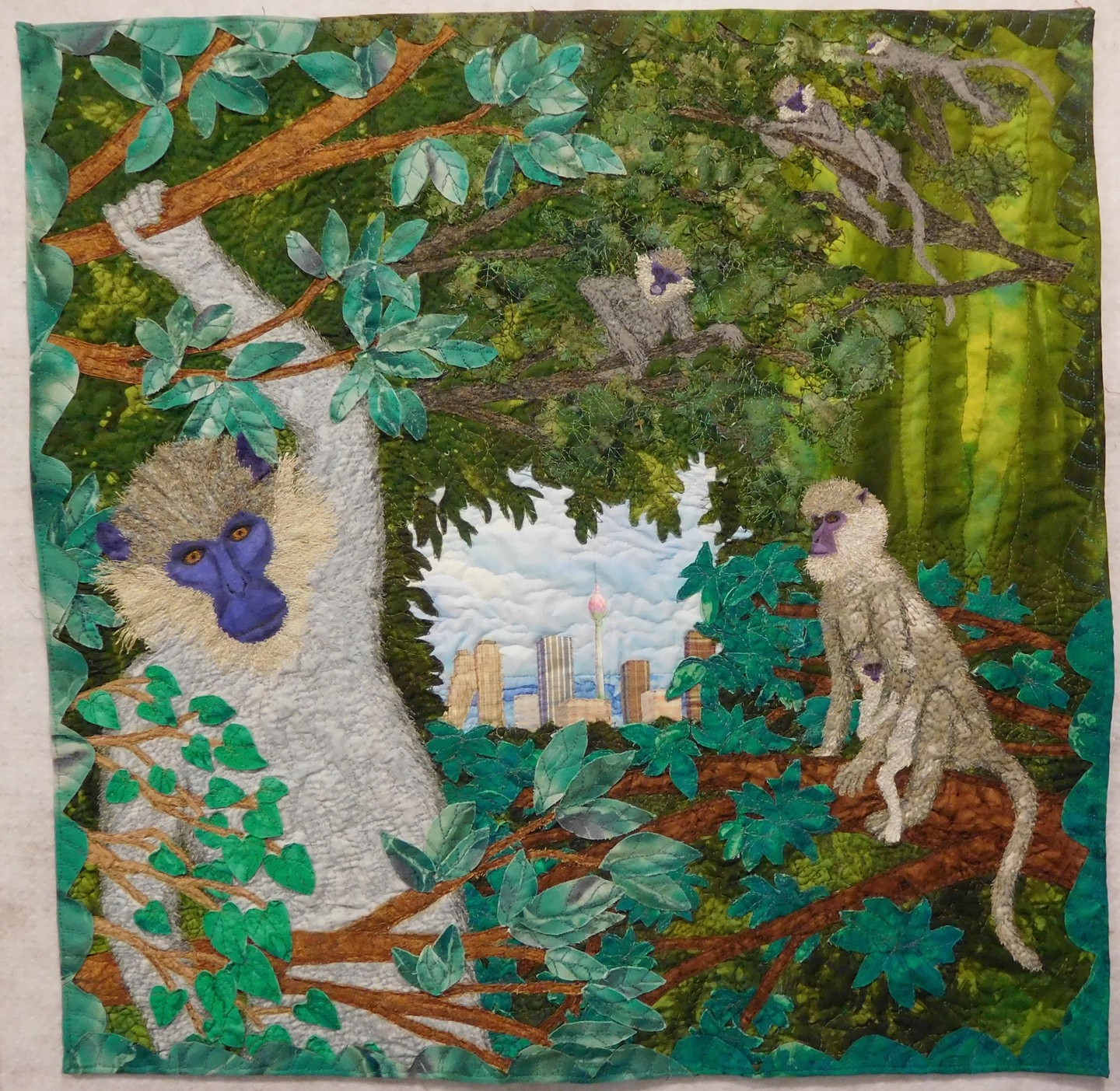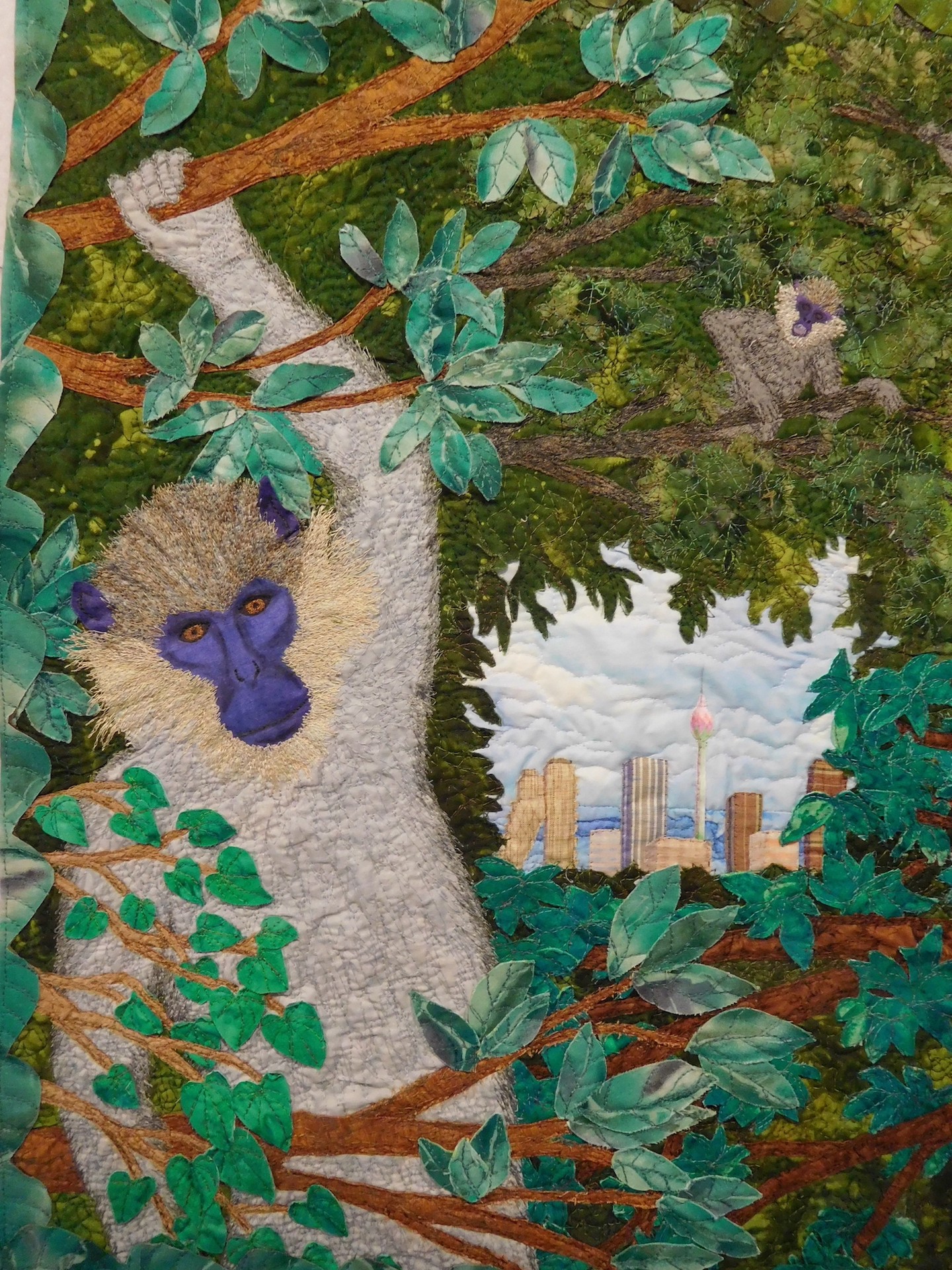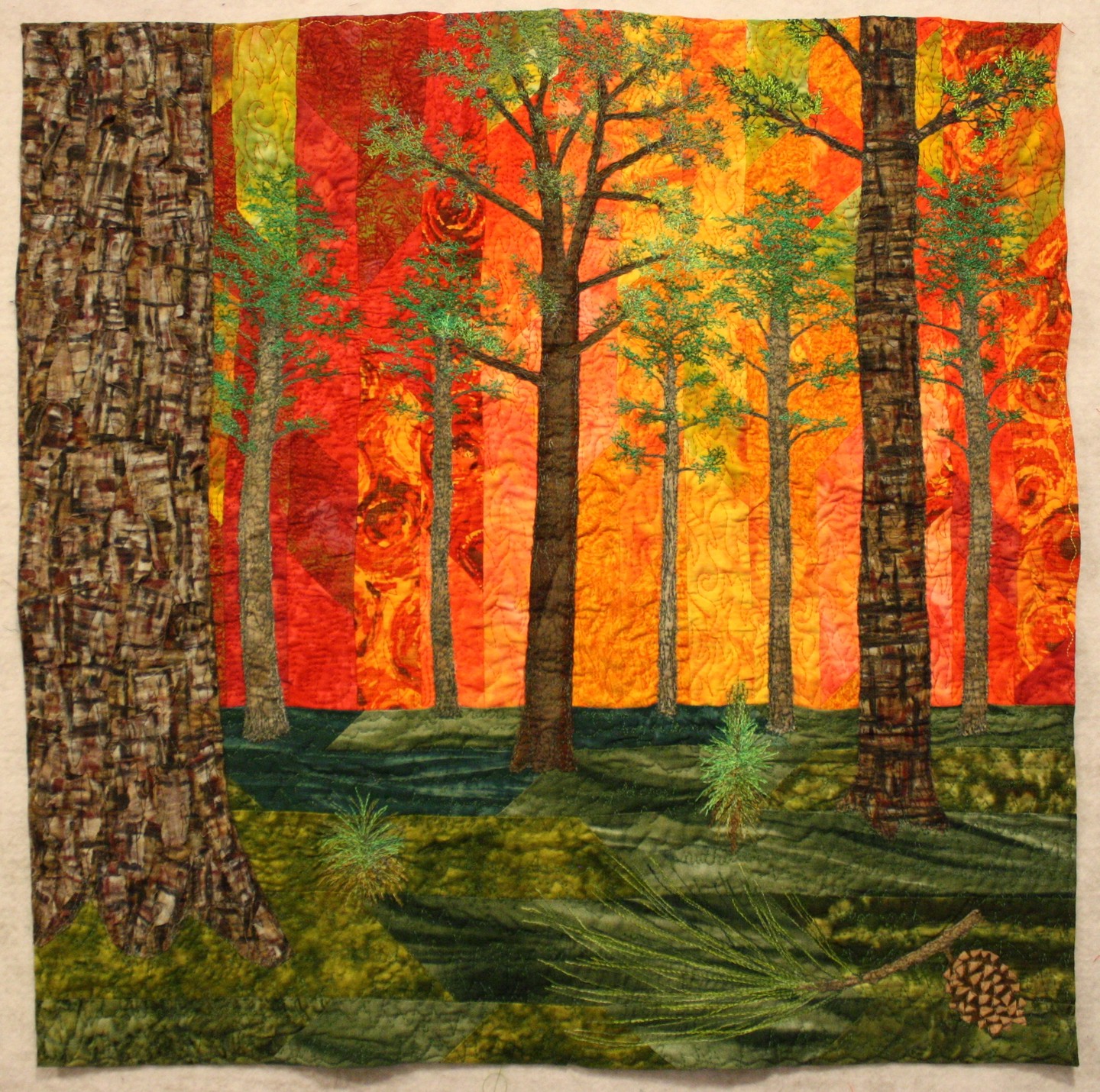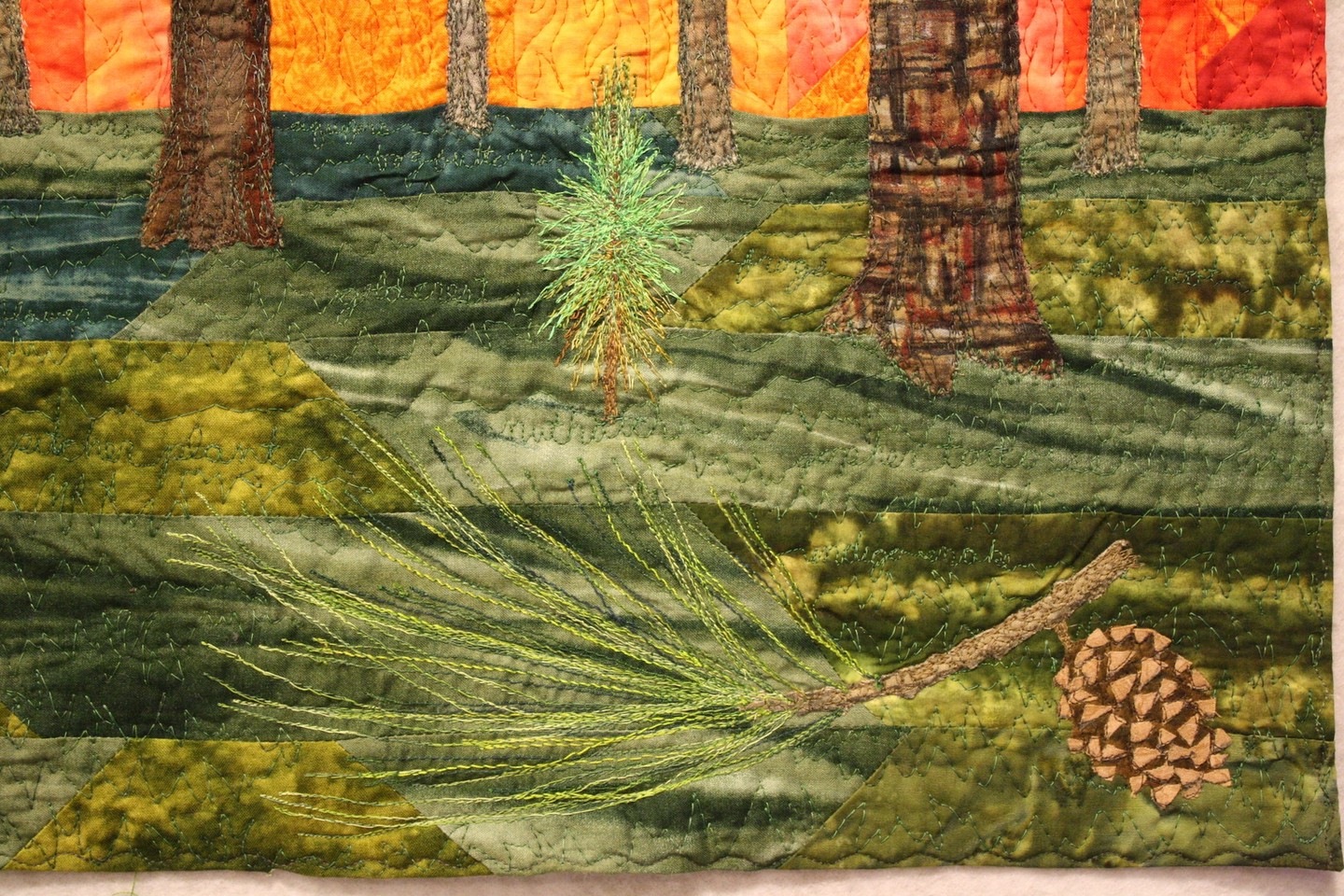“Inspired by Endangered Species” - 182 quilts about the world’s flora and fauna in danger of extinction - was headed by Donna DeSoto. Such an important theme, so I contributed two to her project.
Each one is 24 x 24 inches. See the website for more. A book is also available, with color photographs of every quilt and explanatory text.
Purple-Faced Langur

Purple-faced Langur
The purple face and hair features of this species, Trachypithecus vetulus, are what grabbed me. I enjoy making landscape art quilts, so placing a group of langurs in a jungle setting was my choice of composition. Giving each individual some personality and action was my challenge. In order to show the habitat loss in Sri Lanka, the only place they are found, I researched the cityscape of Colombo (the financial center of the country) and included some iconic structures.
This species is listed as endangered as it is believed to have undergone a decline of more than 50% over the last 50 years, due to a combination of habitat loss and hunting. The population is predicted to decline at the same rate over the next three generations.

detail
$800
- cotton fabrics, some hand-dyed; cotton threads; colored pencil and ink
- applique, raw-edge applique/collage, machine stitched, some details added with colored pencil or fabric pens
Longleaf Pine

Longleaf Pine
My favorite things to create in my art quilts are trees. I found the Longleaf Pine’s (Pinus palustris) life cycle interesting – the way it has adapted to fires in its environment, how it initially looks like a bush instead of a little pine seedling, and how it interrelates with other plants and animals in key ways in the savannah. The broken branch and acorn at the bottom of this quilt are about half life-size. It truly is long-leaved.
The names of some of the environments, plants and animals in its ecosystem are free-motion quilted into the background:
- savannah, river, aquifer, bog, springs
- milkwort, wiregrass, deer flower, bog buttons, orchid, pitcher plant
- nuthatch, frog, red-cockaded woodpecker, gopher tortoise, indigo snake, goldcrest
From Carolina Nature:
Most abundant in sandy areas with regular fires, this large, long-lived tree also occurs in a few locations in the Piedmont. It is much less common than formerly, due to fire suppression and being replaced in plantations by faster growing species.
The needles, borne in bundles of three, average 12" or so long, much longer than those of any other pine species in the eastern US. The cones are much larger than those of other eastern US pine species, averaging about 8" long. The long leaves help protect the apical meristem from the hottest part of the frequent fires that occur (manmade and natural) in its habitat. Young seedlings look like clumps of grass and stay in this stage for several years before they bolt. The grass-like leaves help prevent fires from getting hot enough to damage the terminal bud.

detail
$800
- cotton fabrics, some hand-dyed or hand-painted; cotton threads
- piecing, applique, raw-edge applique, inking, machine stitched